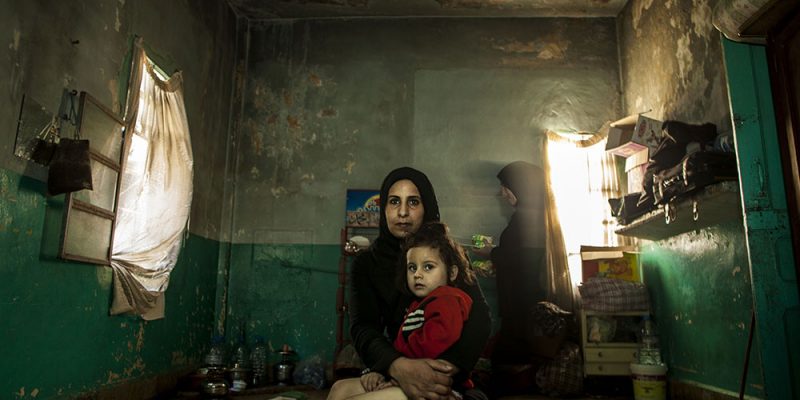1. Narrating a refugee’s journey from Syria to Europe
Since there are no legal ways of reaching Europe, Syrians fleeing their war-torn country have to undertake a perilous journey.
The New Yorker’s six-part video-reportage, Politico’s nteractive map, the video-game The Day We Left and, for the younger ones, UNICEF’s “Unfairy Tales” try to narrate the long way from Syria to Europe.
2. How Syrian refugees stay connected through smartphone
Visual journalist Liam Maloney spent two years documenting the lives of Syrian refugees. The result is Texting Syria, an interactive exhibition of videos and photographs which highlights the crucial role of the smartphones in the life of the refugees, enabling them to stay in contact with their communities of origin (a topic already addressed by a recent study of Open University). A preview via Open Society.
3. “In Turkey, a Syrian child has to work to survive”
The drama of the Syrian children exploited in Turkish textile factories has already been denounced by the striking reportage “The factory of children” by Italian Tv-show Piazza Pulita. The issue is now also closely analysed by a New York Times article.
4. “Now I hate the sea”
In the 5 years since the explosion of the conflict in Syria, millions of people have escaped away from the country and tried to find a safe haven in Europe. However, many didn’t succeed in making the deadly journey – like the 4,000 persons that lost their lives in sea.
To remember them, a floating cemetery has been erected. The AJ+ video.
"I hate the sea now."
4,000 Syrian refugees have drowned trying to cross to Europe since 2011. https://t.co/DLiH4WnzIq
— AJ+ (@ajplus) May 31, 2016
5. Why the central Mediterranean route is so deadly?
Despite the scaremongering on the topic, there is no “new landing emergency”. The true worrying data isn’t the number of arrivals in Italy but rather the number of deaths on the central Mediterranean route – that registered an alarming +16%. In other words: more or less the same amount of landings than in 2015, but with significantly more deaths. What are the causes of this change? This is the true question to be asked, as Nando Sigona underlines .
6. On board with the Mediterranean’s angels
Journalist Raffaella Cosentino spent three weeks on the Aquarius, the boat of the NGO SOS Méditerrannée (equipped in collaboration with Doctors Without Borders) which helps out inflatables and boats trying to cross the Canal of Sicily – all thanks to the work of a tireless crew. A must-read reportage.
7. A Caravaggio for Aylan
Lampedusa: inaugurated on the 3rd of June a new “Museum of Trust and Dialogue for the Mediterranean Sea”, to remember the thousand of victims of the migrations and to try to further integration through art. Amongst the many artworks exposed, the “Amorino dormiente” by Caravaggio (lent from the Galleria degli Uffizi in Florence) – an artwork that, writes Fanpage, “carries a strong symbology and is especially linked to the death of the little Aylan”.
8. The Afghans, second-class refugees
Syria, Iraq, Afghanistan: these are the three countries of provenience of the overwhelming majority – that is, more than 90%- of refugees arriving in Europe in 2015. If, until a few time ago, these three national groups were treated in the same way by the European authorities, things have definitely changed after the EU-Turkey deal: the Afghans and the Iraqians are today becoming “second-class refugees”. The in-depth analysis of the New York Times looks more closely at the drama of the asylum-seekers fleeing Afghanistan.
9. Here’s how ridiculously complicated is to apply for asylum in Greece
Two months after Europe’s agreement with Turkey went into effect, Greece has finally shared the rules for asylum-seekers already in Greece to apply for refugee status. The access to the procedure, explained by an informative booklet distributed by the UNHCR and by the Greek government itself, is almost impossible – as highlighted by Quartz’s article (which also includes Open Migration’s data elaboration).
10. United States: no country for refugees
Barack Obama, they say, really cares about refugees issue and has repeatedly taken a stand – in a more or less conventional way – in favor of the reception of asylum seekers. That notwithstanding, though, in reality the United States are not exactly a welcoming country for asylum seekers: on the one hand, there is the fact that only 2,500 Syrian refugees (out of the 10,000 promised) have been relocated in the country so far; on the other hand, there is the dramatic problem of the neglected asylum seekers from Central America.
A must-read by The New York Times.
(Photo by Giada Connestari/Oxfam Italia via Flickr Creative Commons – CC BY-NC-ND 2.0)









